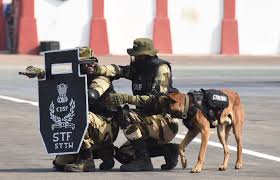Understanding CISF: The Central Industrial Security Force

Introduction
The Central Industrial Security Force (CISF) plays an essential role in ensuring the security of vital installations and infrastructure in India. Established in 1969, the CISF has evolved into a multi-skilled organization, catering not only to central public sector enterprises but also providing security to private sector undertakings, airports, and the Delhi Metro. With its recent expansions into new sectors and technological advancements, CISF remains crucial for national security.
Key Responsibilities
CISF’s primary responsibility is to provide integrated security cover to the public sector undertakings (PSUs) and critical infrastructure facilities, which include airports, metro stations, and nuclear power stations. The force helps in combating threats such as terrorism, sabotage, and theft. As of 2023, CISF secures over 350 installations and has over 1.6 lakh personnel under its command.
Recent Developments
In recent years, CISF has expanded its reach beyond traditional roles. The force has adopted modern technology such as drones, CCTV surveillance, and data analytics to enhance surveillance and response capabilities. The introduction of sophisticated security systems has proved effective in various operations and has bolstered public confidence in safety measures.
Training and Capacity Building
CISF not only focuses on physical security but is also committed to the ongoing training and capacity building of its personnel. In 2022, the force enhanced its training programs to include modules on cyber security, crisis management, and handling advanced weaponry. This training is vital in today’s rapidly evolving threat landscape, ensuring that officers are well-prepared to tackle emerging challenges.
Conclusion
The role of CISF is critical to maintaining the safety and security of vulnerable sectors in India. With the increasing complexity of security threats, the force’s continued evolution through technology and training will be paramount. Looking ahead, we can expect CISF to enhance its capabilities further and possibly expand its role into new areas of national security, serving as a key player in India’s comprehensive security architecture.









